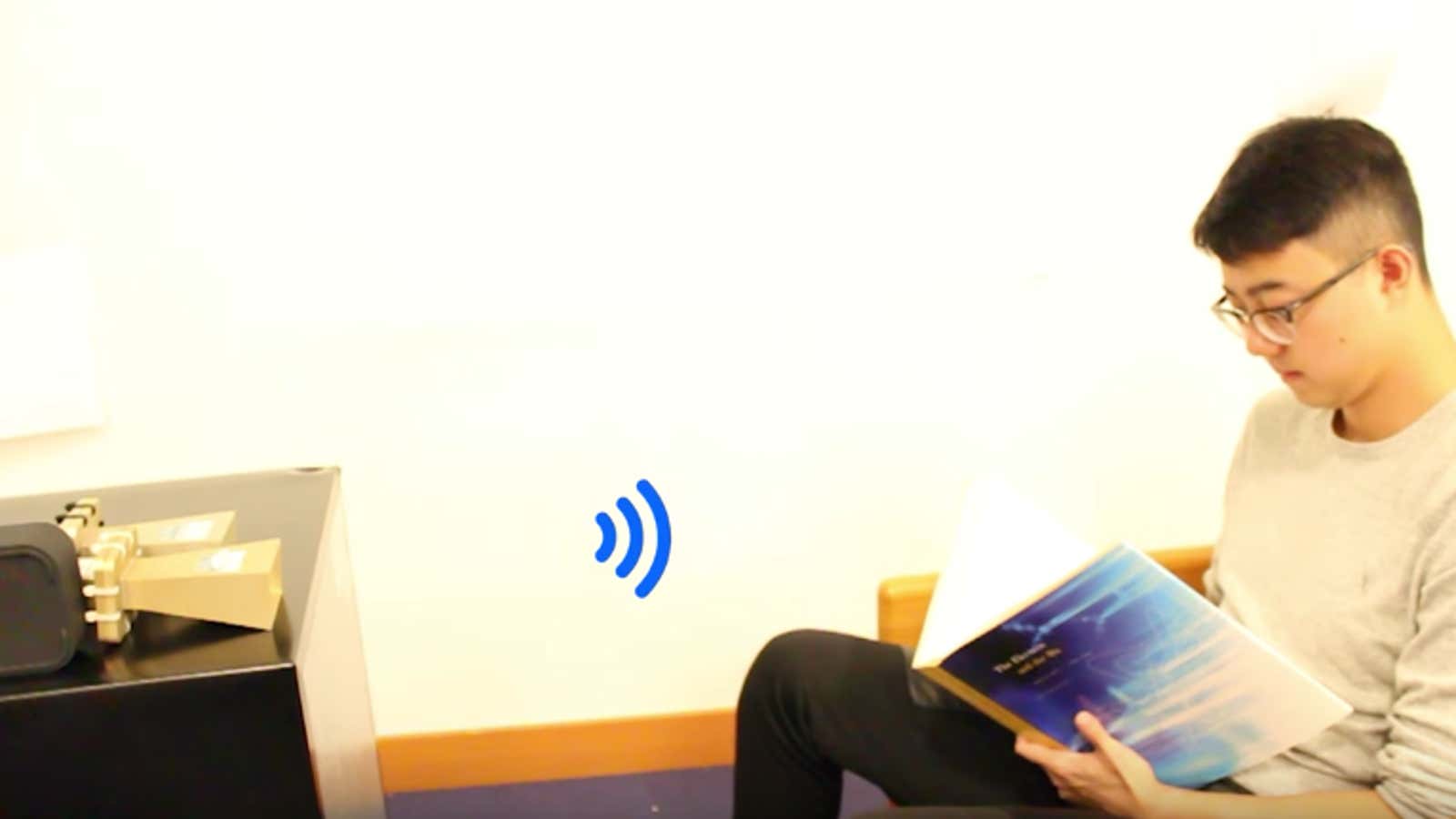“What if your wireless router could detect emotions?”
No one’s really asking that question. Except for, apparently, some researchers from the Massachusetts Institute of Technology’s Computer Science and Artificial Intelligence Lab, who decided to build a wireless signaling device capable of reading vital signs to discern feelings, much like a lie-detection test. Their work (pdf), though not published in a peer reviewed journal just yet, will be presented at the Association of Computing Machinery’s International Conference on Mobile Computing and Networking in New York next month.
The device, which the team is calling EQ-Radio, emits a harmless radio frequency signal. If the waves hit a person in the room, they bounce off, changed very slightly by that person’s breathing and heartbeats. EQ-Radio notes these minute changes in the reflected waves, and uses them to record those vital signs. It does this over and over again, tracking variation in breathing and heart rate.
Changes in vital signs like these are often related to how we feel. Quicker breathing and rapid heart rates can show psychological distress or arousal—even if you aren’t actually feeling or otherwise expressing those emotions. That (plus sweat rates) is the basis for polygraph tests (though they can be wrong).
In a small trial of 30 people, EQ-Radio could predict four emotions—happiness, excitement, anger, and sadness—in 87% of cases after it took a baseline heart and breathing rate. Without an initial vital sign reading, it was correct 70% of the time. A random guess would have been right only in 25% of the time because they were only testing those four emotions.
The team, led by Dina Katabi, a computer scientist and electrical engineer at MIT, wants to develop this technology for use in health monitoring. Collecting data on breathing patterns and heart rate could be a non-invasive way for health care providers to regularly track emotional well-being and flag symptoms of depression for their patients.
There’s another application that the MIT team is excited about: the entertainment industry. They believe their EQ-Radio could also provide feedback to TV and movie producers about how audiences respond to shows and films.
In the video below, researchers even postulate that it could even be incorporated into smart home technology to automatically set a romantic ambiance, should the occasion arise.
The MIT team compared their results to one of Microsoft’s Emotion application programming interfaces, which were released in 2015. In this comparison, EQ-Radio out-performed Microsoft’s software, which accurately picked up on joy, anger, and sadness less than half of the time, compared with EQ-Radio’s 82%, 83%, and 75% accuracy when participants self-reported, respectively. Microsoft doesn’t have peer-reviewed published data on their software’s accuracy yet (although you can view a preprint here), and perhaps more importantly, the two programs work differently: The Microsoft program in this case analyzes facial expression, and EQ-Radio uses wavelength vibration data. The comparison is more of a benchmark for the latter.
Hopefully, though, this tech won’t lead to wifi routers that reveal our emotions to our guests, should we wish to keep those feelings to ourselves.
